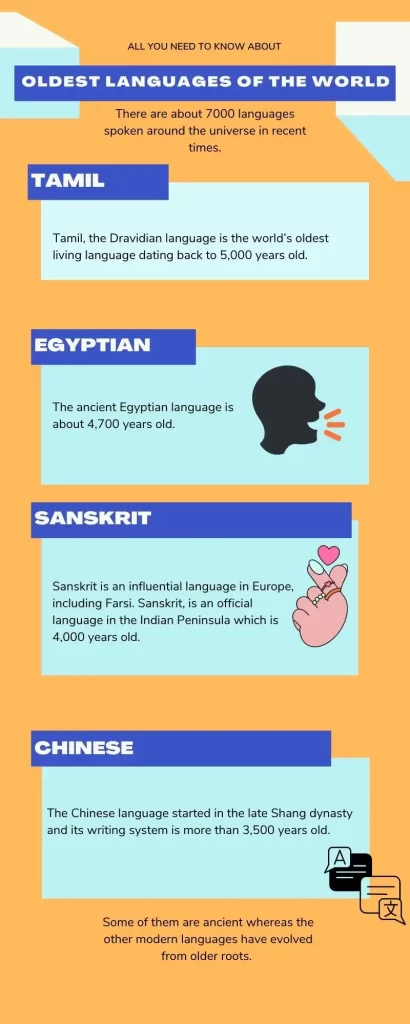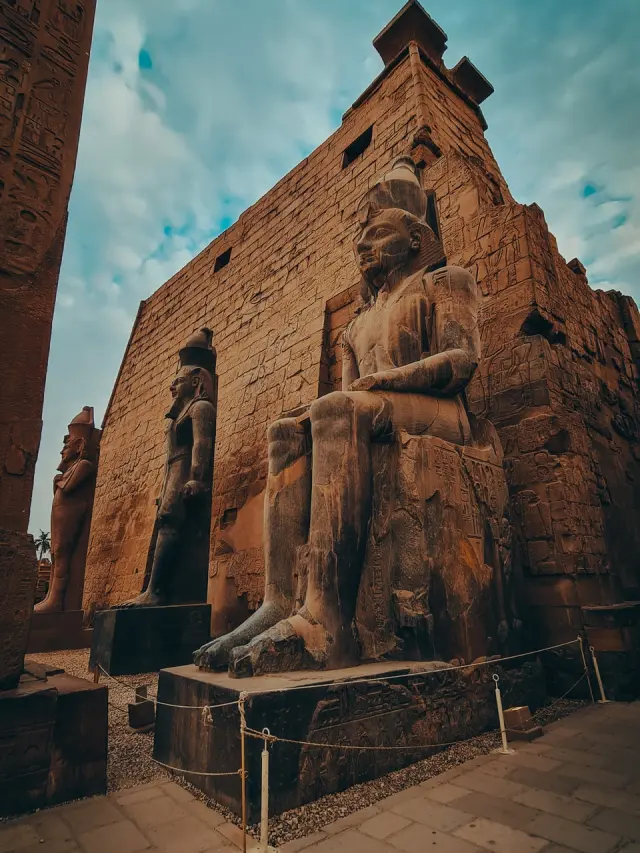There are about 7000 languages spoken around the universe in recent times. It seems that academics and professionals are still not entirely sure of methodologies to determine the oldest languages of the world. Some of them are ancient whereas the other modern languages have evolved from older roots. Others are extinct and still exist for a specific purpose even if the number of speakers has drastically reduced.
Exploring the oldest languages of the world:
Let us explore the oldest languages of the world along with its little history behind it. The below-mentioned list of languages is the ones that have survived the test of time and are still in use even today.
Korean (1500 AD)
The Korean language ranks 10th in the list of the oldest languages in the world. Korean came from Proto-Korean and Old Korean. Further, it evolved from Middle Korean to Modern Korean during the reign of the Three Kingdoms, where the Unified Silla was the most dominant.
During that time, China had an influence on Korea where the samples of Old Korean text used Chinese characters making it difficult to decipher. Middle Korean originated in the 15th century, and it used the unique Korean character, Hangul, as a means of written communication.
More distinctly Modern Korean was established in the 17th century. This language is spoken in Kazakhstan, Uzbekistan, Russia, Japan, South Korea, North Korea, and China. It is also spoken in the U.S. and other parts of the world, along with the growing popularity of Korean TV series and pop culture, Korean is becoming more of a language to learn in the 21st century.
Latin (75 BC)
The inscriptions of the Latin languages first appeared in 75 BC. There was also Old Latin that influenced numerous languages initially before Latin. This was the origin of all other languages like Spanish, Italian, French, Portuguese, Romanian, Catalan, and numerous words along with many words in today’s modern English thus forming the Romans’ family of languages.
Latin became the foundation of most of the European languages and still remains to be an official language in the Vatican and Poland. Moreover, it is taught as a course in higher education classes.
Armenian (450 BC)
Armenian likely started in 450 BC belonging to the family of the Indo-European language. It has the oldest surviving text and a translation of the Bible is the first written record in this language during the 5th century.
Armenian is still a living language with about 5 million speakers. The speakers of the Armenian language are located in Georgia, Iran, Russia, and Ukraine.
Aramaic (900 BC)
The Aramaic language originated from the Aramaic states in the 10th century BC and has donated plenty of words to the Hebrew language and Arabic languages. It is also an influencer of Farsi known for its diplomatic documents and written records.
The various dialects of modern Aramaic are spoken in Lebanon, Israel, Syria, Iran, Iraq and in the western countries like the US, Australia, Europe and Russia. About 579,000 and 1,000,000 of the population speak Aramaic as their native language where it has been a sacred language during its long course of existence, and is one of the native languages of various Semitics from the Near East.
Hebrew (1000 BC)
The Hebrew script dates back to 1000 BC and the language is more than 3000 years old. It is declared as Israel’s official language and labeled as a holy language because it was mainly used for religious texts. The Jewish community made it both the written and spoken language during the rise of Zionism in the 19th Century.
Read: Hebrew language evolution
However, Modern Hebrew, the first official language of Palestine after World War-1 is not referred to generally as the Hebrew language. Instead, it is known as Israeli Hebrew or Israeli and it has been the official language of Israel till date.

Greek (1450 BC)
About 13 million people in Cyprus, Albania, Greece and the Black Sea speak this language making its first appearance in 1450 BC. Greek is the oldest language spoken in Europe and it has been the branch of the Indo-European language family that gets closely related to the North Germanic language family.
The Greek script originated from the Phoenicians and later became the source of Coptic, Gothic, Cyrillic, Armenian, and Latin writing systems. The epic poems Iliad and Odyssey, works of Aristotle and Plato, foundational documents in Western philosophy, Astronomy, Mathematics and other branches of science had its original versions in Greek.
Modern Greek has become the national language in Greece, Cyprus and the EU and the primary language in Turkey, Italy.
Chinese (1500 BC)
The Chinese language started in the late Shang dynasty and its writing system is more than 3,500 years old. This language has the greatest number of first-language speakers with 1.2 billion people speaking Chinese in all its variations and dialects. Its native speakers are located in 37 republics across the globe.
Chinese has dominated the modern stage of human language although it is subdivided into various different languages. The roots of Mandarin Chinese were traced back to 1250 BC. Archaic or Old Chinese was commonly used in the middle parts of the Zhou Dynasty which existed from the 11th to 7th centuries BC.
Read: Languages spoken in China
Evidence of Old Chinese texts were seen on artifacts made of bronze, in Shijing (Classic of Poetry), Shujing (Classic of History), and parts of the Yijing (Classic of Changes). Mandarin Chinese and Cantonese are the most prominent forms of Chinese that are spoken today.
Sanskrit (2000 BC)
Sanskrit is an influential language in Europe, including Farsi. Sanskrit is an official language in the Indian Peninsula that is 4,000 years old. Rigveda, the collection of Vedic Sanskrit hymns, is the first and earliest example of the language. It is also considered as a sacred language that first appeared in 1500 BC and is hailed as the Gods’ language.
The principles of Sanskrit were used during the construction of the computer’s basic language. It consists of 49 letters and is spoken in Uttarakhand. The language also combines sound vibrations and is often used for chanting mantras in Hindu temples. Many people across India and beyond also use this as a second language.
Egyptian (2690 BC)
The ancient Egyptian language is about 4,700 years old. This Egyptian language could be considered the oldest language of the world, and traces back to 2690 BCE. Autobiographical writings were found in the Egyptian tombs and the proto-language hieroglyphs were also found about 600 years before the appearance of complete texts in Egyptian.
Recently, a post from a temple gate in Philae had hieroglyphics tracing back to the year 396 CE. It was also around this time, certain written records in Tamil were found. Egyptians still use the Coptic Church’s liturgical language even today.
Tamil (3000 BC) (Oldest Languages of The World)
Tamil, the Dravidian language is the world’s oldest living language dating back to 5,000 years old, with its first grammar book making its first appearance in 3,000 BC. It is probably the oldest written language and the longest surviving language ranking high up in the list of the 10 oldest languages of the world.
I have always been fascinated by the richness of the Tamil language and culture.
— PMO India (@PMOIndia) January 12, 2022
One of the happiest moments of my life was when I got a chance to speak a few words in the world’s oldest language, Tamil, at the United Nations: PM @narendramodi
India’s Prime minister Mr. Modi during his monthly ‘Mann Ki Baat’ radio address was replying to a listener who asked him if there was something he missed out on during these long years in politics.
Noting that the question seemed simple but was difficult, he said,
I pondered this over and told myself that one of my shortcomings was that I could not make much effort to learn Tamil, the oldest language in the world; I could not make myself learn Tamil!
India’s Prime minister Mr. Modi during his monthly ‘Mann Ki Baat’ radio address
It is also a classical language with a vast collection of literature. It is a living language in the present scenario and thousands of newspapers are still published in this language. Tamil is also the official language in Singapore and Sri Lanka. In India, Tamil Nadu, Kerala, Andhra Pradesh, Karnataka, Puducherry, Delhi, Gujarat, Goa and Assam have it as a native language. It is also believed that there are around 78 million Tamil speakers.
Read also Kannada Language.
